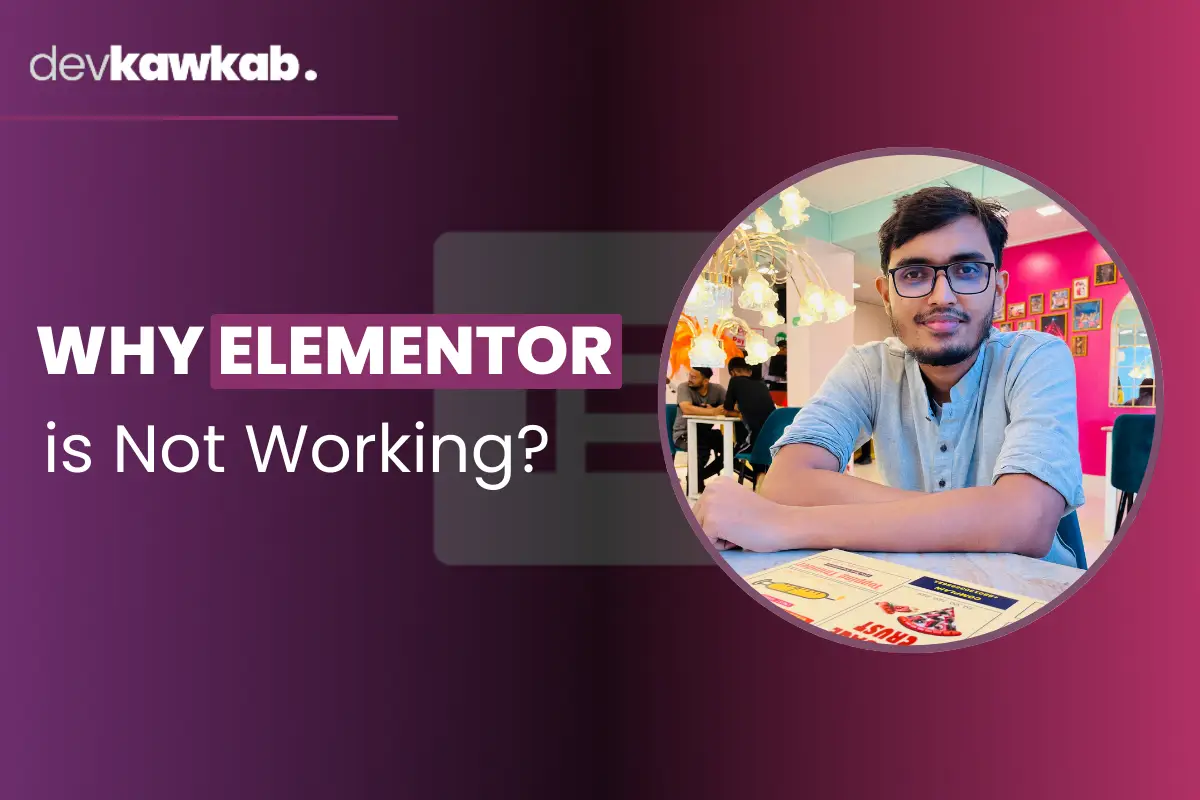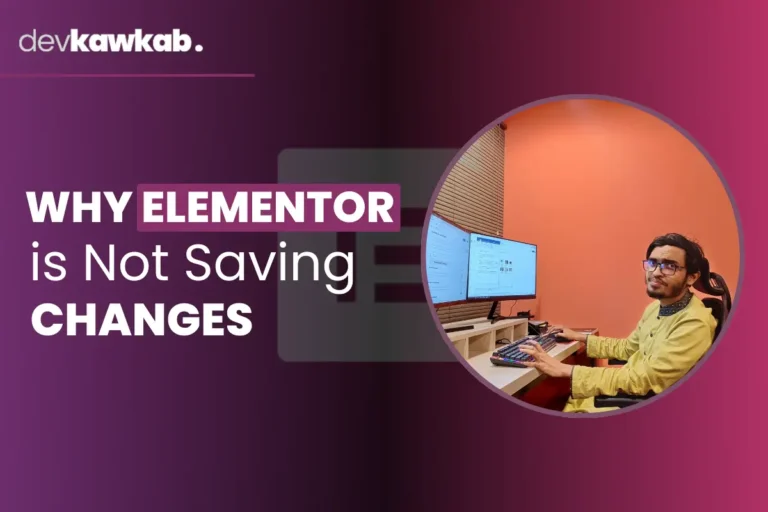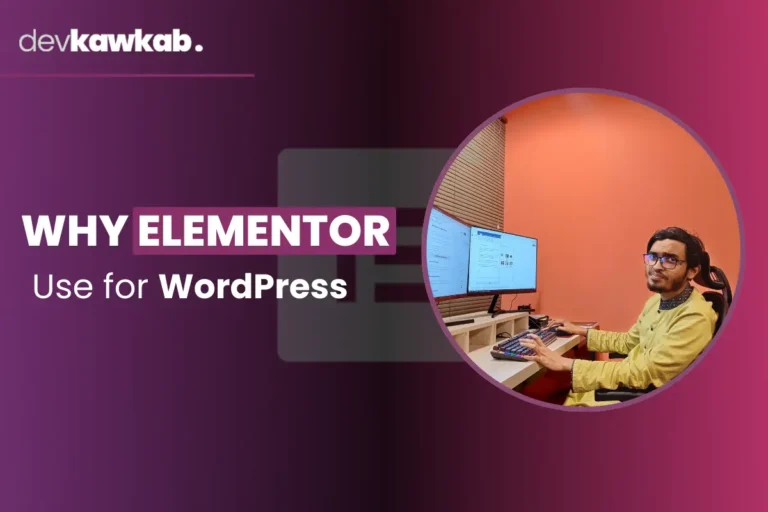Ever spent hours crafting the perfect page in Elementor, only for it to suddenly stop working? Yeah, it’s frustrating – like trying to paint a masterpiece with no brush. Elementor is an amazing tool, but sometimes it acts up, leaving you stuck staring at a screen wondering what went wrong.
So, why does Elementor decide to take a break? It could be anything from plugin conflicts to theme incompatibility, or maybe your WordPress just had a bad update. Fear not! Most Elementor issues have simple fixes, and we’re here to guide you through them.
In this article, we’ll dive deep into the common reasons Elementor stops working and, more importantly, how to fix them. Ready to rescue your designs and get back to building? Let’s jump in!
Read More – Why Elementor is Not Saving Changes?
What Causes Elementor to Stop Working on WordPress?
Ah, the million-dollar question! Elementor can stop working for a variety of reasons. Sometimes it’s like trying to drive a car that’s out of gas – you need to figure out what’s missing to get it running again.
- Outdated WordPress version: Elementor thrives in the latest environment. Running an outdated version of WordPress can cause it to malfunction.
- Outdated Elementor version: If your Elementor isn’t up-to-date, it might clash with newer WordPress or plugin versions.
- Conflicting plugins: Some plugins just don’t get along. Elementor may refuse to work when it’s in a tug-of-war with another plugin.
- Server issues: Inadequate server resources, like memory or execution time, could stall Elementor.
How Can Plugin Conflicts Affect Elementor’s Functionality?
Plugins are like those friends who sometimes just don’t vibe together. The more you have, the higher the chance that one might step on another’s toes.
Here’s a quick overview of how plugin conflicts can mess up Elementor:
| Plugin Conflict | Problem Created in Elementor |
|---|---|
| Caching plugins | Elementor changes may not show instantly. |
| Security plugins | These might block Elementor features. |
| SEO plugins | Can interfere with page editing or preview loading. |
| Optimization plugins | May compress assets, causing the layout to break. |
Fix it: Disable each plugin one by one and see if Elementor starts working again. Once you’ve identified the culprit, you can either switch it out for a similar one or reach out to its developers for support.
Why Does Elementor Fail to Load the Editor Sometimes?
There’s nothing worse than staring at a never-ending loading screen. You’re pumped to design the perfect page, but Elementor seems stuck in a virtual traffic jam.
Why Does this Happen?
- Low memory limit: Elementor is a hungry beast. It needs plenty of resources to load. A low PHP memory limit could be blocking its appetite.
- Script issues: Certain scripts may not load correctly, causing Elementor to get stuck.
- Browser issues: Sometimes, it’s just your browser misbehaving.
Quick fix: Try refreshing the browser or clearing your cache. If the problem persists, increase your site’s PHP memory limit or disable conflicting scripts.
What Are Common Issues with Elementor After a WordPress Update?
WordPress updates can be like throwing a party. New features, improved performance… but sometimes, Elementor isn’t in a partying mood.
Typical Problems After an Update:
- Incompatibility: Elementor might not be ready for the latest WordPress version.
- Broken styles: CSS files may not load correctly, leaving your design looking like a jigsaw puzzle.
- Deactivated plugins: Sometimes, a WordPress update disables a plugin that Elementor relies on.
How to Fix It:
- Wait for updates: Elementor releases updates to match the latest WordPress versions.
- Clear cache: After any WordPress update, clearing the cache could solve issues with broken styles.
- Reinstall Elementor: In severe cases, reinstalling or rolling back Elementor to a previous version can work.
How Does a Lack of PHP Memory Limit Affect Elementor Performance?
Elementor is like an artist at work – it needs space to spread out its tools. If the PHP memory limit is too low, Elementor can’t work its magic properly.
Symptoms of low PHP memory:
- Pages take forever to load.
- Elements don’t save.
- Features within Elementor just don’t work.
To check your PHP memory limit:
- Go to your WordPress dashboard.
- Navigate to “Tools” > “Site Health.”
- Under “Info,” check the “Server” tab.
Fix: Increase your PHP memory limit by adding the following line to your wp-config.php file:
define(‘WP_MEMORY_LIMIT‘, ‘256M‘);
Why Isn’t Elementor Saving Changes Properly?
You’ve spent hours designing a page, only to find that Elementor isn’t saving your hard work. Ouch.
Reasons this Happens:
- Autosave malfunction: Elementor saves your progress, but if there’s a server error, autosave might not work.
- Database issues: Sometimes, changes aren’t saved due to WordPress database problems.
- Browser or cache problems: Sometimes, it’s your browser playing tricks, displaying old versions instead of your latest masterpiece.
Solutions:
- Clear your browser cache: Always a good first step.
- Check server resources: Low server memory or execution time could be preventing changes from being saved.
- Review database logs: Look for any issues that could be affecting Elementor’s ability to store changes.
How Can You Troubleshoot a Blank Page Error in Elementor?
A blank page is the ultimate buzzkill. You’re ready to start designing, and boom – nothing but white space. What gives?
Reasons for This:
- Memory issues: Elementor requires a lot of memory, and a lack of it could lead to a blank page.
- Theme or plugin conflict: Another plugin or theme could be blocking Elementor from loading.
- Corrupt installation: In rare cases, your Elementor installation might be corrupted.
How to Fix:
- Increase memory: As mentioned, boosting your PHP memory limit is a good first step.
- Switch themes: Temporarily switch to a default WordPress theme like Twenty Twenty-One to check if your theme is causing the issue.
- Reinstall Elementor: If all else fails, uninstall and reinstall Elementor to ensure it’s working properly.
What Role Does a Theme Incompatibility Play in Elementor Not Working?
Sometimes, Elementor and your theme just aren’t on speaking terms. This can result in some pretty annoying issues.
What Can Go Wrong?
- Elementor widgets not displaying as intended.
- Page layout breaking, especially on mobile devices.
- Theme styles overriding Elementor’s default styles, causing inconsistency.
To Resolve This:
- Switch themes: Temporarily switch to a compatible Elementor theme like Hello, Kadence or Astra to see if the problem persists.
- Adjust theme settings: Many themes offer settings that can be tweaked to improve compatibility with page builders like Elementor.
- Reach out for support: If your theme is premium, contact its developer for advice on making it work smoothly with Elementor.
How Can JavaScript Errors Lead to Elementor Issues?
JavaScript is the silent helper that makes Elementor interactive. If there’s an error in your site’s JavaScript, it can halt Elementor’s smooth operation.
Common JavaScript Issues:
- Script conflict: A script from another plugin may clash with Elementor, causing certain features to fail.
- Browser console errors: These errors usually show up in your browser’s console and can hint at what’s causing the issue.
Fix it:
- Open your browser’s developer tools (F12 for most browsers) and check for errors in the “Console” tab.
- Identify the offending script and either disable it or fix it with the help of a developer.
Why Does Elementor Not Work After Migrating a Website?
Moving your site to a new host or domain can throw Elementor into disarray. The good news? These problems are usually easy to fix.
Why Does this Happen?
- Broken URLs: Elementor may store URLs in its settings. After a migration, these URLs could still point to your old site.
- Missing files: Some files may not transfer over correctly, leading to incomplete designs.
- Database issues: Migrating a site can cause problems with your WordPress database, especially if the database wasn’t exported properly.
How to Fix:
- Run a search and replace: Use a plugin like Better Search Replace to fix broken URLs.
- Re-upload files: Manually check that all your files, especially media files, were successfully transferred.
- Regenerate CSS: Go to Elementor > Tools > Regenerate CSS to ensure everything displays as it should.
Final Words
And there you have it! Elementor may throw a tantrum now and then, but with the right troubleshooting, you can tame the beast. Whether it’s a plugin causing drama, a memory shortage, or a post-migration mess, most problems are easier to fix than you’d think.
By following these tips, you’ll not only get Elementor back on track but also learn to avoid these issues in the future. You’ll be an Elementor pro in no time!
So next time things go wrong, don’t panic-just roll up your sleeves and get fixing!



